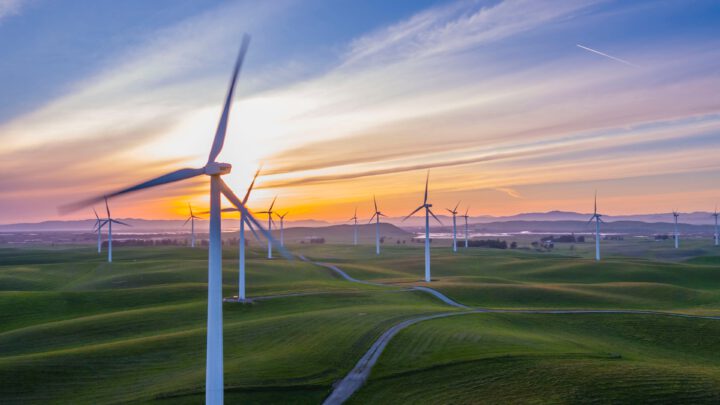If you’ve been following our contents recently, you may have noticed that we’ve been posting a series on clean energy. We are especially keen to find out how technology can help promote and support the energy transition revolution.
We previously studied how government policies on carbon pricing help balance economic and environmental needs. We explored how technology help build smarter grid that combines solar and wind powers, and how optical sensors enable power grid to monitor the status of electricity distribution.
We take a step backward today to look at how technology can help wind turbines work better.
Have you ever driven by a windmill and wonder if those turbines are really working and generating power? Do you ever wonder what is the minimum wind speed required for wind power generation?
The fact is, wind turbines generally require a minimum wind speed of 12-14km/h to turn and generate electricity. A strong wind (50-60 km/h) will allow them to generate electricity at full capacity. However, if wind speed goes beyond 90 km/h, the turbines must be stopped to avoid damage.
The efficiency of a wind turbine is measured by Annual Energy Production (AEP). AEP of a wind turbine is the total amount of electrical energy it produces over a year, measured in kilowatt hours or megawatt hours (KW or MW).
The overall impact of wind turbine performance becomes more and more critical as power grids increasingly rely on wind energy. According to the recent figures published by the American Clean Power Association, the US wind industry had its strongest year ever in 2020 when nearly 17,000 MW of new capacity was added to the grid, which was an 85% increase on the previous year.
The wind turbine obtains its power input by converting the force of the wind into a turning force acting on the rotor blades. The amount of energy which the wind transfers to the rotor depends on the density of the air, the rotor blade area, and the wind speed.
Since not many of these factors can be controlled, site selection thus becomes an extremely important factor when setting up a windmill. But what else can we do to improve the energy performance?
The answer is blowing in the wind, and we need technology to help track it down.
Renewable energy generation has great potential for improvement in terms of forecasting energy supply and demand, optimal siting, optimal sizing, etc. These are complex problems to solve and that’s where machine learning and data science can be applied.
Every wind turbine produces data. There are ample of energy data., In order to get the right tools to make use of these data, we need to think about what the disciplines involved are. In the case of performance optimization of wind turbine, it requires expertise from various domains including material science, mechanical engineering, operation management , and machine learning to come up with actionable solutions.
This means a wind farm need a unique algorithm to identify factors that are hinder the energy performance.
Luckily, nowadays there is a rich ecosystem of open-source data science tools to enable machine learning, allowing scientists to model more sophisticated relationship between signals and wind blades data. Machine learning approach can significantly reduce uncertainty compared with conventional approaches.
With the help of tailor-made sensors and AI-driven analytics, wind farms can reduce risk of failure of key components such as blade and turbines, reduce operating costs, improve energy output, hence improve the profit margin.
Wind turbines in a wind farm affect one another. Turbines experience different wind impacts based on their location within the farm. Data collected by individual turbine sensors miss the bigger picture of larger wind flow. When they work collaboratively, their collective performance increases. Imagine if turbines can learn from each other, they may share information about wind flow to protect each other from strong winds.
In summary, the global energy market is in great demand of wind energy. Therefore wind turbine performance is becoming more and more critical. However, the efficiency of a wind farm is affected by many complicated natural factors. Wind farms could need machine learning and data science to formulate unique solutions for their own plants. Information sharing and learning between each wind turbine can also help make wind energy more efficient.
Reference List
http://www.acua.com/uploadedFiles/Site/About_Us/Windfarm.pdf
.
.


Hydro: Rise to Power – Avantfaire Investment Management Limited
[…] have previously discussed clean energy topics such as wind farms and wind/solar smart grid. Let’s dive into hydropower today and take a close look at the […]